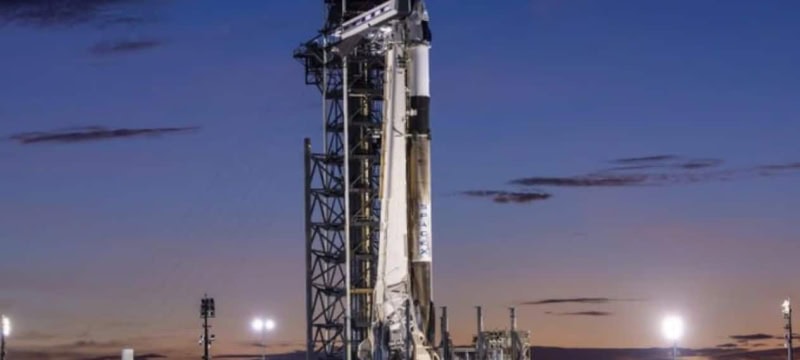SpaceX has delayed the historic Polaris Dawn mission, which was scheduled to launch an all-civilian crew into orbit with the goal of achieving the first spacewalk by private citizens. Originally set for early Tuesday, the launch is now targeted for early Wednesday due to a technical issue involving a ground-side helium leak on the Quick Disconnect umbilical. This umbilical connects the rocket to the launch tower, and helium is used to pressurize the fuel lines.
The mission, led by billionaire Jared Isaacman, will use a Falcon 9 rocket to propel the SpaceX Dragon capsule to a record altitude of 870 miles (1,400 kilometers), surpassing any crewed mission since the Apollo era.
Read more: Will NASAs Sunita Williams and Barry Wilmore Face Oxygen and Food Shortages Before SpaceX Rescue?
Isaacman will command the mission, joined by mission pilot Scott Poteet, a retired US Air Force Lieutenant Colonel; mission specialist Sarah Gillis, a lead space operations engineer at SpaceX; and mission specialist and medical officer Anna Menon, also a lead space operations engineer at SpaceX. The mission’s highlight will be the first-ever commercial spacewalk, featuring newly developed SpaceX EVA suits.
High-Radiation Area
The four-member crew underwent more than two years of intense training for the groundbreaking mission, which included extensive hours on simulators, skydiving, centrifuge training, scuba diving, and climbing an Ecuadorian volcano.
The Polaris Dawn mission will be the first of three under the Polaris program, a joint effort between Jared Isaacman, founder of Shift4 Payments, and SpaceX.
Isaacman explained at a recent press conference that the goal is to develop and test new technologies and operations to advance SpaceX’s ambitious vision of enabling human space travel.
While Isaacman did not disclose his total investment, it is reported that he spent approximately $200 million on the SpaceX Inspiration4 mission in September 2021, which was the first all-civilian orbital mission.
On its first day, Polaris Dawn will reach its peak altitude and briefly enter the Van Allen radiation belt, an area filled with high-energy charged particles that can be harmful to humans over long periods.
The crew will orbit nearly three times higher than the International Space Station, though this distance will still be far less than the record of over 248,000 miles set by Apollo 13 in 1970.
Apollo 13’s astronauts traveled that distance to circle around the far side of the Moon after an explosion damaged their spacecraft, forcing them to cancel their lunar landing and return to Earth without major propulsion.
New Spacesuits
On the third day, the crew will wear their cutting-edge EVA spacesuits, which feature heads-up displays, helmet cameras, and advanced joint mobility systems. They will take turns performing spacewalks in pairs, each spending 15 to 20 minutes outside the spacecraft, 435 miles above Earth.
Even those remaining inside the Dragon capsule will experience the vacuum of space, as the capsule lacks an airlock.
The next day will focus on testing laser-based satellite communication between the spacecraft and SpaceX’s Starlink network, which consists of over 6,000 satellites, to improve space communication speeds.
The crew will also carry out nearly 40 experiments designed to enhance our understanding of human health during extended space missions. This includes testing contact lenses with embedded microelectronics to monitor changes in eye pressure and shape.
After six days in space, the mission will end with a splashdown off the coast of Florida, where a SpaceX recovery ship will be waiting.
The second Polaris mission will use a Dragon capsule as well, while the third mission is planned to be the inaugural crewed flight of SpaceX’s Starship, the prototype for their next-generation rocket, which is central to Musk’s vision of eventually colonizing Mars.









